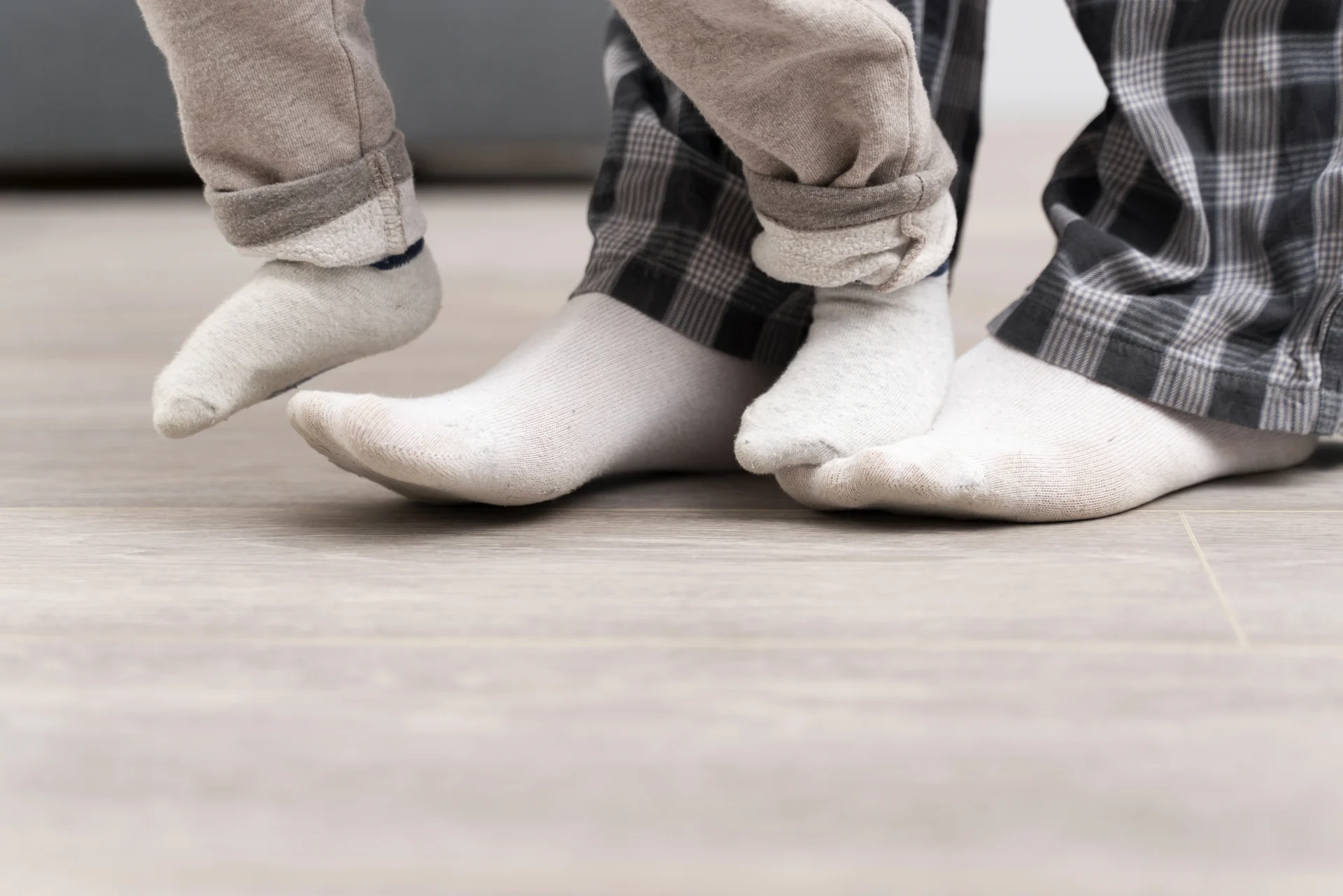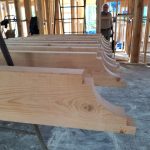
How long before you can walk on newly installed flooring? Find Out!
How Long to Wait Before Walking on Newly Installed Floors
Whether you just finished a full remodel or laid down fresh planks in a single room, you might be wondering how soon can you walk on new flooring without causing damage. Good news—this waiting period typically isn’t too daunting, and following a few simple guidelines helps ensure that your new floors stay pristine for years to come.
Below, you’ll learn why each flooring type calls for a unique waiting window, how to manage the floor acclimation period, and the best ways to protect your freshly installed floors. We’ll mix in a bit of data along the way, so you feel confident planning your next steps.
Understand the waiting window
You’ve probably invested time choosing the perfect flooring material, maybe even sampling different types of flooring installation methods. Now that your floors are in place, you’ll want to let them settle before normal foot traffic resumes. Think of it as a brief courtesy period for adhesives to bond or for the material to adjust to its new environment. This not only safeguards against dents and scratches but also helps prevent structural issues like unseated planks or warped boards down the line.
- A big factor is how each flooring type responds to temperature, humidity, and direct pressure.
- Adhesives often require at least 24 hours to cure, though some laminate or vinyl floors rely on locking systems instead of glue.
- Temperature and humidity changes can cause wood to swell or shrink, so waiting promotes stable installation.
By respecting these windows, you give your floors the best chance to look beautiful and last longer. It usually only takes a day or two of patience, which is easier than dealing with premature wear or repairs down the road.
How long before you can walk on newly installed flooring
We’ve done the research, so you don’t have to. While manufacturers offer specific guidelines, most flooring types follow general wait times. Hardwood and engineered hardwood typically need 24 hours before light foot traffic, though full curing can take weeks. What is engineered hardwood flooring? It’s a durable, multi-layer wood option with similar care needs to solid wood. Laminate floors usually require 24–48 hours to prevent shifting, while what is laminate flooring refers to a synthetic surface layered over fiberboard. LVP and LVT need about 24 hours, with glue-down types possibly needing more time. Tile requires around 72 hours for grout and adhesive to set, and carpet needs 24 hours to let seams and padding settle. To protect your new floors, avoid foot traffic, heavy furniture, and pets during this time. Keep humidity between 30–60% and indoor temperatures stable to allow proper floor stabilization.
Acclimation, temperature, and humidity
Waiting to walk on new floors is only part of the picture. To get the most out of your freshly installed surfaces, you need proper acclimation. Different flooring materials respond to temperature and humidity in unique ways:
- Wood-based floors (hardwood or engineered hardwood) are especially sensitive to moisture. If installed in very cold or very hot conditions, the planks might shrink or expand excessively once they reach normal indoor temperatures.
- Vinyl and laminate also need time to adjust to ambient conditions so that adhesives or locking mechanisms bond properly.
- During extremely humid seasons, wood may swell, causing planks to buckle if you skip the acclimation. In arid climates, you risk cracks or gaps if the planks were not prepped beforehand.
Most manufacturers suggest storing wood or laminate in the room where it will be installed for a few days before putting it down. That’s why thorough flooring pre-installation preparation is part of a winning strategy. According to the National Wood Flooring Association, using a temporary heating or dehumidification system to mimic your normal living conditions helps the floor settle in more effectively. Good news—once you’ve managed temperature and humidity, you’re much less likely to see shifting planks later.
Quick tips for proper acclimation
- Maintain indoor temperatures between 60°F and 90°F during and after installation.
- Keep humidity levels around 30%–60%.
- Permit materials to rest in the installation space for at least two to three days (or per your flooring manufacturer’s guidelines).
- Communicate with any subcontractors beforehand so everyone is aligned on the acclimation process.
When in doubt, follow your specific product instructions. Some floor types are stricter about temperature and humidity than others, but they all benefit from a stable environment.
Practical tips for a perfect first step
After waiting the recommended time, consider these extra moves to keep your brand-new floors in top shape:
- Wear socks or soft-soled shoes the first few times you walk on the floors, especially if you installed hardwood or laminate.
- Keep pet nails trimmed to reduce scratching during the early days.
- Lift your furniture instead of dragging it. For tile and hardwood, try furniture slides.
- Use rugs or runners in high-traffic areas once the floors have fully cured, especially near entryways.
- Plan a gentle cleaning routine. If you have wood floors, see how to clean floors after installation for best practices.
You should also explore how to maintain new hardwood floors after installation if you chose wood. And if you’re concerned about subfloor readiness for future projects, check out what is the best way to prepare a subfloor for installation. A little extra care as you settle in can go a long way in preventing annoying scratches, dents, or warps that cut your flooring’s lifespan short.
How Long Before You Can Walk on Newly Installed Flooring Without Causing Damage
“How long before you can walk on newly installed flooring?” The quick answer is that it depends on your flooring material, but generally you’re looking at 24 hours for most types, up to 72 hours for tile or more delicate adhesives. Letting your flooring settle helps avoid uneven boards, cracked grout, and other issues down the road. With a little patience and some climate control, your new surfaces will reward you by looking gorgeous and performing well for years.
Remember, you can always refer back to these best practices if you forget the exact wait times or conditions. A small delay now saves you a headache and preserves the professional appearance of your investment. After all, you deserve to enjoy every inch of your floors—and you’ll be able to do so confidently once they’ve had the chance to bond and acclimate.
Ready to Transform Your Home?
At Mazzamuto Construction, we believe great spaces start with thoughtful planning and skilled craftsmanship. Whether you’re exploring ideas or ready to build, our team is here to guide you every step of the way. Let’s bring your vision home—reach out for a personalized consultation today!
You can also learn more about us or browse our testimonials to hear from past clients.
Frequently Asked Questions
1. How to clean floors after installation?
After installing your new floor, start with a gentle, dry clean-up. Use a soft-bristle broom or microfiber dust mop to remove sawdust, debris, and adhesive residue. Avoid using water or wet mops for at least 24–72 hours, especially if adhesives or finishes are still curing. Once it’s safe, clean with a pH-neutral floor cleaner designed for your flooring type (e.g., wood, laminate, vinyl). Don’t use abrasive scrubbers or strong chemicals they can dull or damage the finish. For stubborn spots, use a damp cloth and mild soap, and dry immediately.
2. How long before you can walk on newly installed flooring?
This depends on the type of flooring and installation method:
- Glue-down floors: Wait at least 24–48 hours to allow adhesives to fully set.
- Floating floors (click-lock): Usually safe to walk on after 12–24 hours.
- Nail-down floors: Light walking can begin after installation, but avoid heavy furniture for 24–48 hours.
- Refinished or site-finished hardwood: Wait 48–72 hours or until the finish is completely cured.
Always follow your flooring manufacturer’s specific guidelines to avoid shifting or damaging the surface.
3. How to maintain new hardwood floors after installation?
To keep your hardwood floors looking new:
- Dust or sweep daily with a microfiber mop to remove grit that can scratch the surface.
- Clean weekly using a hardwood-safe floor cleaner—never use vinegar, steam mops, or excessive water.
- Use felt pads under furniture legs and rugs in high-traffic areas to prevent dents or fading.
- Maintain consistent humidity (between 35–55%) in your home to prevent the wood from expanding or shrinking.
- Refinish when needed, most hardwood floors can be lightly sanded and recoated every few years to refresh their appearance.
4. Do I need to run my HVAC system during installation?
Yes, it helps maintain consistent temperature and humidity. The National Wood Flooring Association recommends having a functional heating or dehumidification system to mimic normal living conditions.
5. Can I install floors at any time of year?
You can, but spring and fall are often ideal because humidity and temperatures are moderate, which helps materials acclimate and adhere securely.
Key takeaways
- Allow at least 24 hours of downtime for hardwood, engineered hardwood, laminate, vinyl, or carpet, with tile often needing up to 72 hours.
- Keep temperature between 60°F and 90°F, and humidity between 30% and 60%, for best acclimation.
- When in doubt, check your manufacturer’s instructions and wait a little longer.
- Plan ahead: store materials in the installation room a few days before laying them down.




